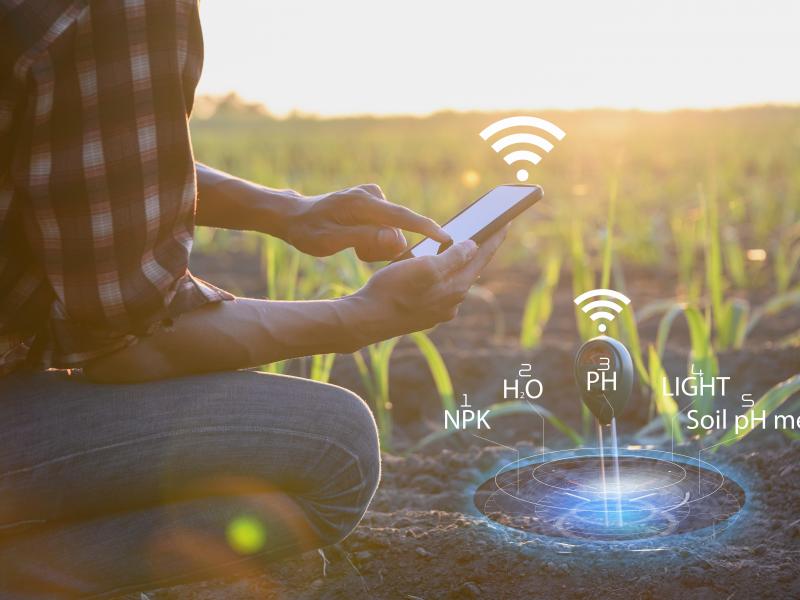Soil monitoring sensors

Description of the innovative solution
Crop growth can be constrained by lack of water, low nutrient supply or other soil functions. The use of sensors to measure key aspects of the soil relevant for crop growth e.g. soil moisture, nitrogen, phosphorus, potassium, micronutrients, can optimise input application, leading to significant water, fertiliser, energy and labour savings. Sensors can vary in type and complexity. They can be simple probes that measure changes in soil properties related to soil moisture to more complex proximal or remote soil sensing technologies that can measure a range of soil properties. Data collected by...
Crop growth can be constrained by lack of water, low nutrient supply or other soil functions. The use of sensors to measure key aspects of the soil relevant for crop growth e.g. soil moisture, nitrogen, phosphorus, potassium, micronutrients, can optimise input application, leading to significant water, fertiliser, energy and labour savings. Sensors can vary in type and complexity. They can be simple probes that measure changes in soil properties related to soil moisture to more complex proximal or remote soil sensing technologies that can measure a range of soil properties. Data collected by sensors can be sent to the cloud where it can be accessed from any mobile or fixed device allowing remote monitoring of the soil.
Examples and additional resources
Real-world examples
See this solution in action in different contexts and settings around the world
Soil water sensor system
Soil water sensor system
Soil water sensor system
Soil water sensor system
Soil water sensor system
Soil water sensor system
Soil water sensor system
Soil water sensor system
Soil water sensor system
Soil water sensor system
Soil water sensor system
Soil water sensor system
Soil water sensor system
Soil water sensor system
Soil water sensor system
Soil water sensor system
Soil water sensor system
Soil water sensor system
Soil water sensor system
Soil water sensor system
Soil water sensor system
Additional resources
Learn more about this solution through studies, articles, business cases, and other information
Seeds of Silicon: Internet of Things for Smallholder Agriculture
sensor calibration, device design, access to advice and expertise) for smallholder farmers
Contacts
Connect to others working on and with this solution around the world
Pathways to uptake
Engage with our “backcasting tool” to imagine and design “pathways to uptake” for this solution in your setting.
This process involves defining a future vision of this solution being used in your context, and then working “backwards” to identify necessary steps to achieve this vision by 2030. Going through this exercise as an individual or with a team can help to clarify the WHAT/WHEN/HOW of moving a solution (or package of solutions) towards having major impact. We hope these pathways will inspire outside-of-the-box thinking, creative approaches, and actionable concrete steps to move ideas into action.
Pathway builder
Explore pathways for this solution
Be the first one and add a pathway for this solution!